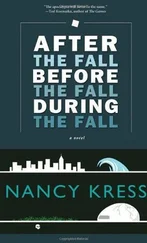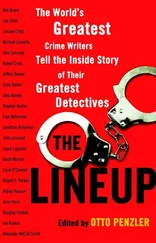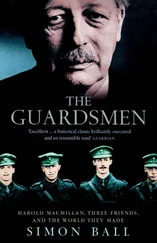While we wait for Blake, the idiot paces between the white lines of a parking space furthering his thesis on the nature of our being. “I’ve been thinking,” he says intently.
“Don’t,” the theologian snaps.
“Go ahead,” the one with the soft voice says, “I’m interested.”
The idiot begins to circle Jane, the way a lecturer might move around a classroom. “First,” he says, “we must discern causality, actuality, and then interior versus exterior work. That which the atoms of the body exert upon each other, from that which arises from foreign influences to which the body may be exposed.”
Cat groans and the musician makes a prattling noise that sounds like drums.
“What I mean,” he says, “is a physical system that works on other such systems, a force acting across a distance.”
The theologian raises his head. “Do you mean vis viva ?” he asks. “A living force?”
“Yes,” sighs the idiot, as if he’s come home from a long trip away, “I mean life . Our life, our living force.”
For the next few minutes, we debate, in our own terms, what the idiot means. We watch a chocolate wrapper cartwheel across the pavement and try to apply his theories to it.
“Do you mean fluttering?” Cat asks.
“Yes,” the idiot says, “and no.”
“Time?” John offers.
“Yes.” The idiot nods enthusiastically. “And no.”
The musician makes a tuba sound —“Pom pom pom poooom, pom pom pom pom ”—and the idiot raises a hand in the air to signify that he’s thinking.
“Good. Modulation. Energy as more than something contained or expelled. Energy as potential .”
The theologian proposes an experiment. He suggests we try to move an object at a distance — the brown bag that’s fallen out of the rubbish bin at the edge of the parking lot or the bird’s nest in the crook of the closest tree.
“But you said—” Cat states incredulously.
The theologian replies quietly, “Things have changed.”
“If we are energy—” the idiot continues, but he stops because like the rest of us he can sense something shift, a ripple in the group.
We glance around. Everything we can see — the line of shrubs, the shop awning across the road, Jane’s skirt hem, the ruff of Sam’s fur, the early autumn leaves — is lifting or quivering.
“Storm?” asks John. But that isn’t what’s different; it’s a presence like ours standing silently with us.
“Who’s there?” the one with the soft voice asks, and we all crane our necks and peer around the parking lot the same way we did in the Chester when she asked when a bird was no longer a bird.
“ Whoot ?” asks Herschel.
And then, as if answering her own question, the one with the soft voice whispers, “Leeson?”
The white Transit that turns into the parking lot has Metcalfe’s Garden Company embossed in large green letters on its panels and the proclamation Specialists in restoration and landscape work in brown underneath. Blake pulls up two feet from where Jane is standing and then jumps out to open the passenger-side door. We clamber in the back with Sam to sit amongst the sagging bags of fertilizer and the empty planters. By the time Blake pulls out of the parking lot we sense we are back to our usual number. “Attendance,” says the theologian, and one after another, starting with the girl, we all say, “Here.”
There’s a plastic bag of picnic supplies in the well between the front seats. Jane rummages through it: overwrapped corner-shop sandwiches with wilted lettuce stuck to the sides, a bottle of wine that a week ago she would never have consented to drink, crisps and two glossy lemon puddings with sprinkles on the top.
She drops the pudding back into the bag and asks, “Where are we going?”
“It’s a surprise.” Blake raises his eyebrows and smiles charmingly, as if he’s done something wonderful — and crowded in the back of the van we think that maybe he has. Time has taught us to appreciate the gesture.
Blake parks on the side of the road across from the Whitmore’s main gate. He turns to Jane and says, “Shall we?”
Jane leans forward in her seat. Through the wrought iron she can make out the faded brown brick of the gatehouse and, beyond that, the east wing of what was once the main building’s women’s ward. “What are we doing here?”
Blake shrugs. “I saw all that stuff in your room. Thought it would be fun to break and enter.” He grabs the bag between the seats and then locks the van once Jane is out. “A bunch of us used to come out here when we were younger to mess around. We have to go in through the woods.”
The brick of the Whitmore’s main buildings is the same umber we remember, though some of it is covered in graffiti. The slate roof of the administration block has collapsed in one corner and the windows of the long galleries — a quarrelled stretch of clouded glass — have been replaced with pressboard. The grass is weed-licked and long.
Blake walks across the lawn, grinning at Jane, the plastic bag of picnic supplies swinging in his hand, Sam trotting happily beside him. At the greening fountain he drops his peacoat for Jane to sit on and then sprawls out on the grass; he is facing the ruin of the building, and she is facing the cleft in the woods they just came from.
If we try, we can remember the fountain working. How bright and charming it was, its marble the white of the Greek temples Professor Wick once described at an afternoon lecture series given by the patients. The cherub at the centre of the fountain holding a jug that spouted the purest water — though the poet once shook his head and said that it was a pity to live in a world where the fountains did not pour wine.
We lie on the grass with Jane and Blake, and drowsy tufts of cloud drift above us. We want to stay with Jane to see if she will talk about the Whitmore, but we feel a competing desire to explore the grounds, to wander through the emptied wards of the buildings. Pulses of lived experience are already lighting up the caverns of what we call memory, and for some of us, there is an easing, a sense of calm that comes in proximity to the idea of “home.” We know that on the other side of the Whitmore’s dim exterior, the galleries and day rooms, sickbeds and laundry, the rose-windowed chapel will have changed, that time and use will have altered them. Still we know that these rooms, even the shape and weight of them, can give us something Jane cannot: a folding-over of our lives, a direct way in.
“Stay with Jane,” Cat says to the girl, and all of us wait until the child sits in the grass beside Sam.
A hundred small fissures of time open as we walk toward the old wood door. One of us remembers a sickbed and being fed awkwardly with a spoon, the light tap of the metal on his front teeth. Another remembers feeling cold, as if all the blood had drained from his body, as if there couldn’t be blankets enough. Some of us remember the ball, some of us the airing courts, some of us singing in rehearsals for the talent show, the warble of our breath in our throats. And one of us remembers Christmas, everyone working in the kitchen to make sweetmeats and preserves for gifts. The tang of jam in our mouths — in what we remember of our mouths. A burst of raspberries, their small, flecked seeds on our tongues.
After lunch, when she returns to the records office, Jane discovers that the servant ledger nestled in the back of the bowed leather Register of Employment for Inglewood House lists a Nora Hayling in service, starting the 22nd of August 1877. Some of the other staff entries have end dates inked in a different hand, and notes about termination or retirement, but Nora does not. The only entry that coincides closely with the date Nora was hired is a reference to a Mary Margaret Teems, who was let go on the 26th of July that same year for pilfering flour and sugar.
Читать дальше












